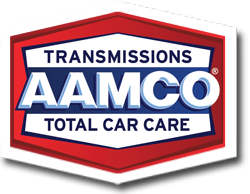Not all automatic transmissions are created the same. As car technology has grown over the years, not only have traditional automatic transmissions improved but there are also more varieties of automatic transmissions. These different types offer options for functionality, efficiency, and overall driving experience. While it ultimately comes down to personal preference and priorities, it’s helpful to know what your options are when you’re looking at automatic transmission vehicles. At AAMCO, our mechanics are always here to help answer any questions you have about your car’s transmission, problems you’re encountering, or any other car system.

Traditional Automatic Transmissions are Still Standard
What you think of as a “typical” automatic transmission is still available. This transmission works thanks to gears, clutches, a hydraulic system, solenoids, valves, and a torque converter. These parts work together with sensors and the car’s computer system to change gears automatically, rather than relying on the driver to say when a gear shift should happen. All the driver has to do is shift out of Park and into Drive or Reverse to get their car moving.
They Can Be Less Fuel Efficient
While automatic transmissions have passed many manual transmissions by fuel economy in recent years, a standard automatic tends to be the least fuel-efficient of all automatic transmission options. This is because the transmission is designed to slip through the torque converter to create a smooth take-off and shifting until you get into the highest gears where the torque converter finally locks up and stops slipping. Fuel efficiency is still very different from one car to another, even with different types of transmissions, so it’s important to look at each car individually.
Dual-Clutch Transmissions Bring Performance Improvements
Much like the name sounds, dual-clutch transmissions operate using two clutch mechanisms and 2 sets of gears, odd and even sets of gears, at the same time. At any given time, two gears are engaged, one odd-numbered gear and one even-numbered gear, though only one is in use. Because everything is controlled by computers and actuators, there’s no need for a clutch pedal, just like an automatic transmission. Instead, the car’s sensors detect when to switch power from one clutch to the other and when to shift gears. The unengaged clutch then shifts up to or down to the next anticipated gear depending on how the vehicle is being driven.
Enjoy Smoother Transitions Between Gears and Better Fuel Economy
By having two gears mechanically engaged – one on each clutch mechanism – it enables a much quicker transition from one gear to the next. Rather than engaging and disengaging the clutch with slippage, there’s just a quick switch from one clutch mechanism to the next. This means there are near-instant gear transitions. Smoother, quicker gear transitions help create a more enjoyable ride, and more importantly for the manufacturer, improves fuel economy. There’s still a similar sensation from shifting gears, though it’s less jerky than a traditional automatic transmission.
Continuously Variable Transmissions (CVTs) Don’t Shift Gears
Most recently, continuously variable transmissions have made their way onto the market. While they used to be found mainly in light vehicles and off-road vehicles, they’re now found in many common vehicles, too. They operate with two cone shaped pulleys and a metal push belt that slide up and down the coned pulleys to change ratios continuously as more or less power from the engine is needed to keep the car moving. This means there are no gear changes in the traditional sense which will eliminate shift feel as the car changes gears.
They’re Considered the Most Fuel-Efficient Transmission
Without distinct gear changes, there’s less revving beyond the engine’s precise power curve as the vehicle approaches needing to shift ratios. This means an even smoother ride than with a dual-clutch transmission. CVTs are also considered the most fuel-efficient option. The downsides to having a CVT, however, can include extra engine noise when accelerating, more frequent fluid and filter changes, and potentially more costly repairs when they do wear out.
Time for a Transmission Service? Visit Your Local AAMCO Auto Shop
No matter what type of transmission your car has, the transmission experts at your local AAMCO transmission shop are here to help keep it in its best health. Whether you’re due for regular transmission maintenance or suspect there may be a necessary transmission repair, our mechanics will run diagnostics to get to the root of the problem. Give us a call with any questions or concerns – or simply schedule your appointment with us online today!
